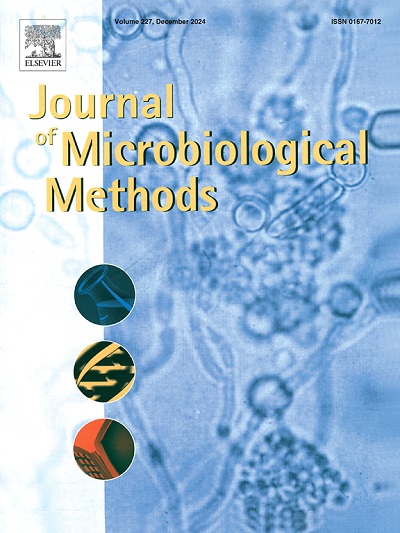淋病奈瑟菌分子诊断研究进展
IF 1.9
4区 生物学
Q4 BIOCHEMICAL RESEARCH METHODS
引用次数: 0
摘要
淋病奈瑟菌是一种引起性传播感染(STI)淋病的人类专性病原体。淋病是报告的第二种最常见的细菌性传播感染,由于致病病原体已对目前用于治疗的抗生素产生耐药性,淋病日益成为全球公共卫生关注的问题。因此,整体方法对于减少淋病发病率和控制耐抗生素淋病奈瑟菌的传播至关重要。改进诊断方法是对抗不断上升的性传播感染发病率的途径之一,本综述旨在概述通过检查美国食品和药物管理局(FDA)批准的核酸扩增试验(NAATs)来检测淋病奈瑟菌核酸的策略。本综述提供了fda批准的naat的最新和全面信息,包括最近批准的用于护理点检测和淋病检测的家庭标本采集试剂盒的naat,这可能会彻底改变性传播感染服务。预计在淋病分子诊断方面将与疫苗开发一起取得进一步进展,因为实现世界卫生组织到2030年将淋病奈瑟菌感染发生率降低90%的目标仍然存在挑战。本文章由计算机程序翻译,如有差异,请以英文原文为准。
Advances in molecular diagnostics of Neisseria gonorrhoeae
Neisseria gonorrhoeae is a human obligate pathogen that causes the sexually transmitted infection (STI) gonorrhea. As the second most commonly reported STI of bacterial origin, gonorrhea is a growing global public health concern given that the causative pathogen has developed resistance to antibiotics that are currently used for treatment. A holistic approach is thus essential to reduce the incidence of gonorrhea and to control the spread of antimicrobial resistance N. gonorrhoeae. Improvement in diagnostics is one of the avenues to combat rising STI rates and this review aims to provide an overview of the strategies used for N. gonorrhoeae nucleic acid detection by examining nucleic acid amplification tests (NAATs) that are cleared by the United States Food and Drug Administration (FDA). The updated and comprehensive information of FDA-cleared NAATs presented in this review includes the recent clearance of NAATs for point-of-care testing and home-based specimen collection kit for gonorrhea testing that can potentially revolutionize STI services. Further progress in the molecular diagnostics for gonorrhea is anticipated along with vaccine development as the challenge remains to meet the World Health Organization goal of reducing the incidence of N. gonorrhoeae infection by 90 % by 2030.
求助全文
通过发布文献求助,成功后即可免费获取论文全文。
去求助
来源期刊

Journal of microbiological methods
生物-生化研究方法
CiteScore
4.30
自引率
4.50%
发文量
151
审稿时长
29 days
期刊介绍:
The Journal of Microbiological Methods publishes scholarly and original articles, notes and review articles. These articles must include novel and/or state-of-the-art methods, or significant improvements to existing methods. Novel and innovative applications of current methods that are validated and useful will also be published. JMM strives for scholarship, innovation and excellence. This demands scientific rigour, the best available methods and technologies, correctly replicated experiments/tests, the inclusion of proper controls, calibrations, and the correct statistical analysis. The presentation of the data must support the interpretation of the method/approach.
All aspects of microbiology are covered, except virology. These include agricultural microbiology, applied and environmental microbiology, bioassays, bioinformatics, biotechnology, biochemical microbiology, clinical microbiology, diagnostics, food monitoring and quality control microbiology, microbial genetics and genomics, geomicrobiology, microbiome methods regardless of habitat, high through-put sequencing methods and analysis, microbial pathogenesis and host responses, metabolomics, metagenomics, metaproteomics, microbial ecology and diversity, microbial physiology, microbial ultra-structure, microscopic and imaging methods, molecular microbiology, mycology, novel mathematical microbiology and modelling, parasitology, plant-microbe interactions, protein markers/profiles, proteomics, pyrosequencing, public health microbiology, radioisotopes applied to microbiology, robotics applied to microbiological methods,rumen microbiology, microbiological methods for space missions and extreme environments, sampling methods and samplers, soil and sediment microbiology, transcriptomics, veterinary microbiology, sero-diagnostics and typing/identification.
 求助内容:
求助内容: 应助结果提醒方式:
应助结果提醒方式:


